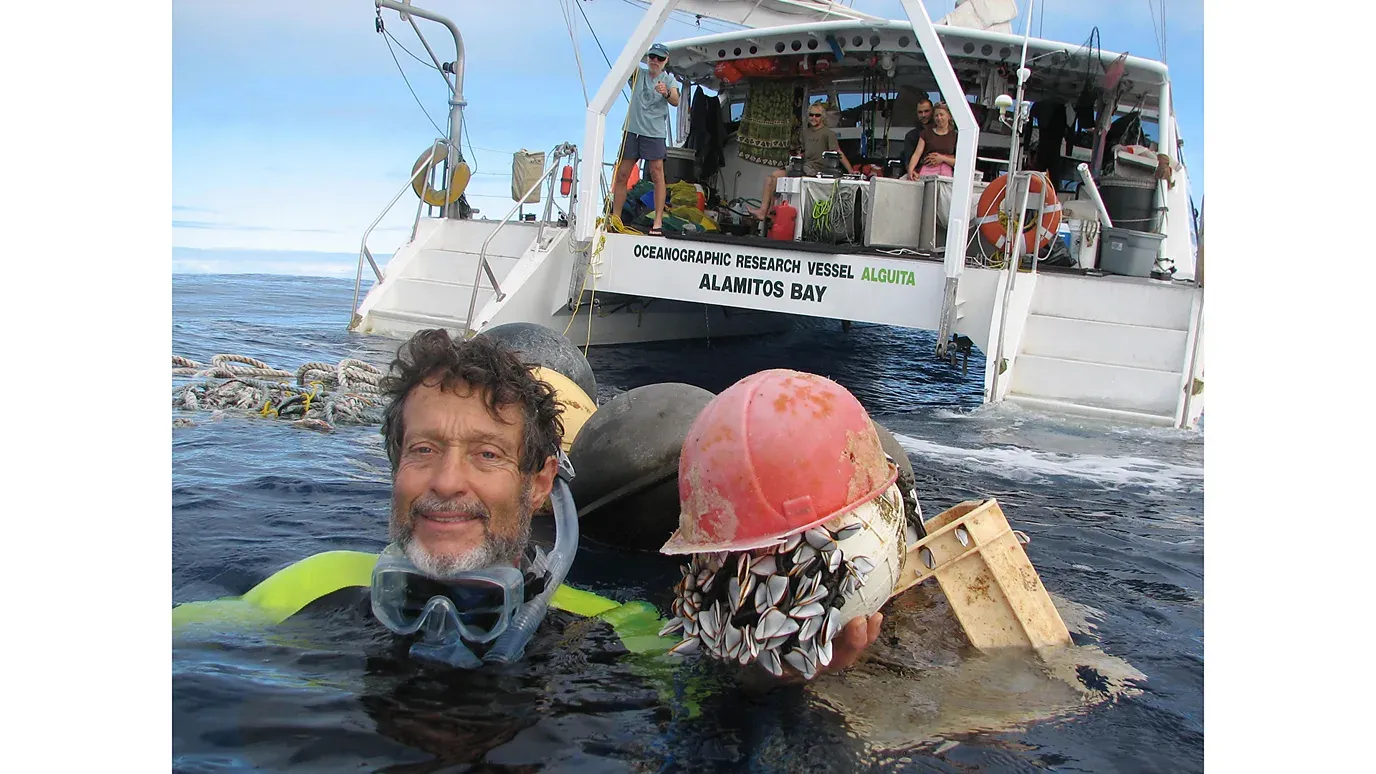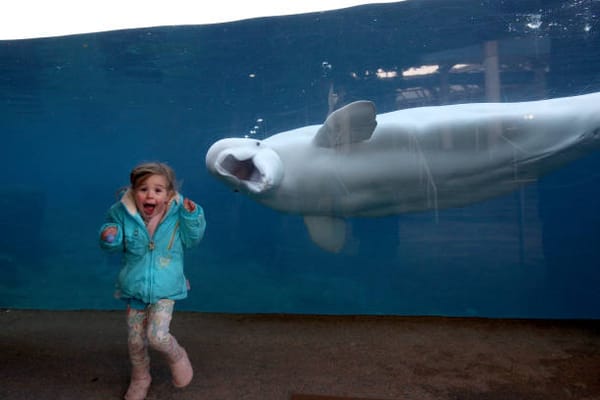The Unseen Grasp of the Great Pacific Garbage Patch

The Great Pacific Garbage Patch (GPGP) is a massive sea of plastic so big it could cover the entire state of Maharashtra—from Mumbai to Nagpur—with a thick, suffocating layer of waste. Spanning millions of square kilometers, this floating disaster is trapped between Hawaii and California, growing bigger every year as more plastic floods in from across the globe.
The GPGP, it’s a deadly threat to marine life, entire ecosystems, and the food we eat. As plastic continues to pile up, it chokes wildlife, poisons the ocean, and even makes its way into the seafood on our plates. What happens in the Pacific is already affecting us here, and if we don’t act soon, things will only get worse.
What Is the Great Pacific Garbage Patch?

The GPGP is located between Hawaii and California, within an area known as the North Pacific Gyre which is a system of rotating ocean currents that captures and holds debris. This gyre, combined with other currents, essentially acts as a giant conveyor belt, funneling waste from various sources into the patch. It’s actually a massive, dispersed area of plastic and other debris that’s spread across millions of square kilometers of ocean. This floating mass is mostly made up of microplastics—tiny particles that are nearly invisible to the naked eye.
How Did We Get Here?

The Great Pacific Garbage Patch (GPGP) formed as a result of decades of plastic pollution and the natural movement of ocean currents. Since the 1950s, the production and use of plastic have skyrocketed, leading to massive amounts of plastic waste being discarded and ending up in the environment. This waste enters the ocean through rivers, stormwater runoff, and improper disposal from coastal communities, ships, and boats. Once in the ocean, it is carried by the North Pacific Gyre which traps and concentrates debris in the central part of the North Pacific. This current system effectively creates a "convergence zone" where debris accumulates over time, forming the GPGP.
Watch Out for some Myths!
It’s a Solid Island of Trash: People think it’s one giant clump of trash, but it’s actually spread out over a huge area with tiny bits of plastic and debris.
It’s Only Plastic: While plastic is a big part, it also has fishing nets, ropes, and other waste mixed in.
It’s a New Problem: It’s been building up since the 1950s, when plastic production took off.
It’s Only in the Pacific Ocean: There are garbage patches in other oceans too, not just the Pacific. But, the GPGP is the largest one.
Cleaning It Up Would Be Easy: Cleaning up isn’t simple—debris is spread out, it’s expensive, and the small bits are hard to collect.
It’s Only an Environmental Problem: It can affect us too since microplastics can end up in the seafood we eat.
All the Trash is on the Surface: A lot of the trash, especially tiny microplastics, is mixed in the water and not easy to see.
The Unseen Crisis: How It’s Killing Our Oceans and Us

What’s truly alarming about the GPGP is not just how huge it is but how it’s impacting everything that depends on the ocean. From sea turtles choking on plastic bags to whales dying from ingesting debris, marine life is paying the price. Larger creatures like whales, dolphins, and sharks ingest massive amounts of plastic, which blocks their digestive systems, leads to malnutrition, and often results in death. But it’s not just large animals suffering; plankton—the foundation of the ocean food chain—are consuming microplastics, which then move up to fish, and eventually, humans.
It’s a toxic cycle. The plastic in the ocean absorbs harmful chemicals from the surrounding water. These chemicals, including pesticides, heavy metals, and other pollutants, leach into the food chain when marine animals ingest the plastic. What’s in the ocean ends up on your plate—microplastics have been found in seafood across the globe, making it clear that the damage to marine life will eventually harm us all.
Can We Fix This? The Solutions to a Global Crisis

Several innovative approaches to clean the GPGP are already underway, though they’ll need to be scaled up drastically to tackle the full scale of the problem.
The Ocean Cleanup project, launched by Boyan Slat, is leading the charge in removing plastic waste from the GPGP. The system consists of large, floating barriers that use the ocean’s currents to funnel plastic into a central collection area. It’s a massive undertaking, with the goal of removing millions of tons of plastic from the patch over the coming decades.
Emerging technologies like AI-powered vessels and autonomous drones are also playing a major role in tackling the plastic crisis. These smart systems can identify and collect plastic waste with pinpoint accuracy, sorting and removing it efficiently.
Stopping the Plastic Flow: Global and Local Action
On the international stage, the Basel Convention, a global treaty that regulates hazardous waste, was expanded in 2019 to include plastic waste. This means that countries are now legally obligated to manage plastic production, disposal, and export more responsibly. Countries that produce the most plastic will need to take responsibility for its disposal and ensure that it doesn’t end up polluting the oceans.
Countries around the world are stepping up with their own policies to combat plastic pollution. Kenya has implemented one of the strictest plastic bans in the world, outlawing single-use plastic bags entirely. The European Union is also taking action, with a ban on single-use plastic items like straws, plastic cutlery, and plates. These policies are helping to reduce the amount of plastic entering the oceans, but they must be expanded and enforced globally to be truly effective.
The power of grassroots movements should not be underestimated. Organizations like The Surfrider Foundation and local community groups around the world are mobilizing to clean up beaches, raise awareness, and advocate for stronger policies. These local initiatives, from beach cleanups to environmental education programs, are integral to reducing the amount of plastic that enters the ocean.
Consumer Responsibility: What You Can Do
Consumers can make a massive difference by changing their habits. Reducing plastic use, choosing sustainable alternatives, and recycling properly can all help lower the volume of plastic waste. Simple actions, like carrying reusable bags, using metal or bamboo straws, and choosing products with minimal packaging, can have a global impactwhen adopted by millions of people.
A Future Without Plastic? It’s Possible—but Only if We Act Now
The GPGP is a stark reminder of the damage we’ve already done, but it’s also a call to action. The crisis may seem insurmountable, but solutions are emerging. From innovative technologies like The Ocean Cleanup to global treaties and local actions, we have the tools to reduce and ultimately eliminate the plastic pollution that’s choking our oceans.
The key is collective action—governments, businesses, and individuals all must act together. If we continue on our current path, the GPGP will only grow, along with the risks it poses to our environment, economy, and health. But if we make the right choices—cutting down on plastic production, supporting policies that limit plastic waste, and adopting sustainable alternatives—we can still turn the tide.
The ocean’s cry for help is real. But there’s still time to answer.



